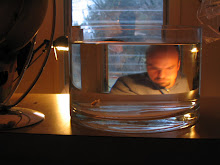 In August of 1990, Jane's Addiction - Perry Farrell's alternative band and pet project - released their second album, which was perhaps most notable for the massive frat party hit 'Been Caught Stealing,' and for an extended track called 'Three Days' that features the guitar work of Dave Navarro (who went on to play for the Red Hot Chili Peppers, whose work is possibly known to even the most culturally isolationist of this blog's readers).
In August of 1990, Jane's Addiction - Perry Farrell's alternative band and pet project - released their second album, which was perhaps most notable for the massive frat party hit 'Been Caught Stealing,' and for an extended track called 'Three Days' that features the guitar work of Dave Navarro (who went on to play for the Red Hot Chili Peppers, whose work is possibly known to even the most culturally isolationist of this blog's readers).At some point in the mid-1990s, I sent my dad a mixed tape that featured a number of rather recent rock tunes, including 'Three Days.' Such gifts, as I remember it, necessitated at least a bit of contextualization, for a similar mixed tape sent by my brother, a year or two earlier, had been interpreted as a sampler of my brother's band's recent output. Given that that tape had included 'Been Caught Stealing,' the misinterpretation was a fun one: working on the assumption that my brother had co-written and played on the song, but not realizing that it was one of the decade's biggest hits, Dad seemed only mildly impressed. But dads can surprise, and months after I'd sent him my (clearly labeled and attributed) tape, he mentioned that he'd enjoyed cranking 'Three Days' in the old Reliant K wagon.
And, just this week, during a longish spell of Cleo-watching, I was looking for some background music, and found that same Jane's Addiction CD on our shelves. Hadn't listened to it in years, but popped it in, and turned it up. And Cleo and I played a chaotic, no-holds-barred, rules-waived version of backgammon while the bass quietly established a floor, and Farrell shrieked in his inimitable way, and Navarro's guitar soared, and soared.
Sure, context matters in the interpretation of art. (Unless you're the staunchest of New Critics, and in that event you're not new anymore: you're a half century behind the times). In fact, I still remember hearing about Kurt Cobain's suicide on MTV news while at a beach house with my parents - and, upon telling them, realizing that they'd never heard of Cobain. But, all of that said, context only matters to a degree. To a grad student making a mixed tape, to a dad driving in a Reliant K, to a dad on dad duty on a cold December day... something about the song works. And now, as it works, and as Cleo hears it for the first time, it carries me back, as well as forward.





